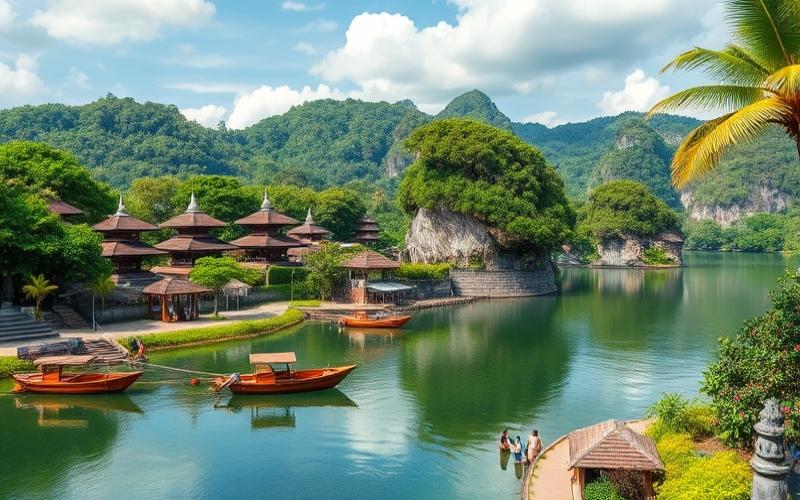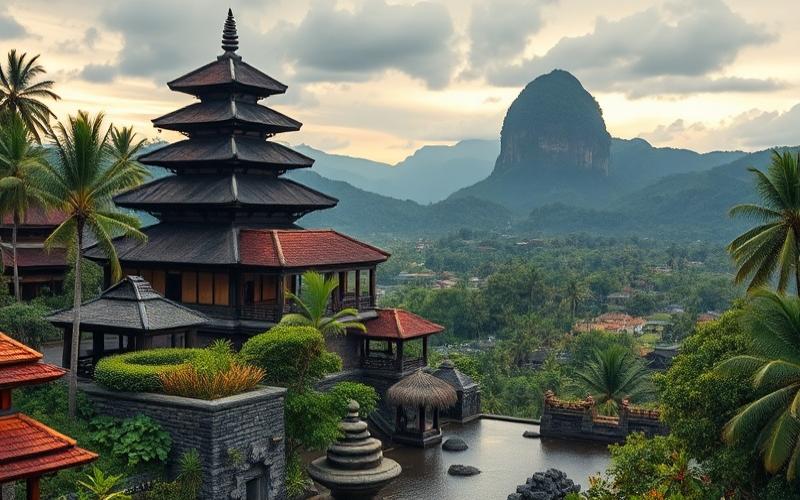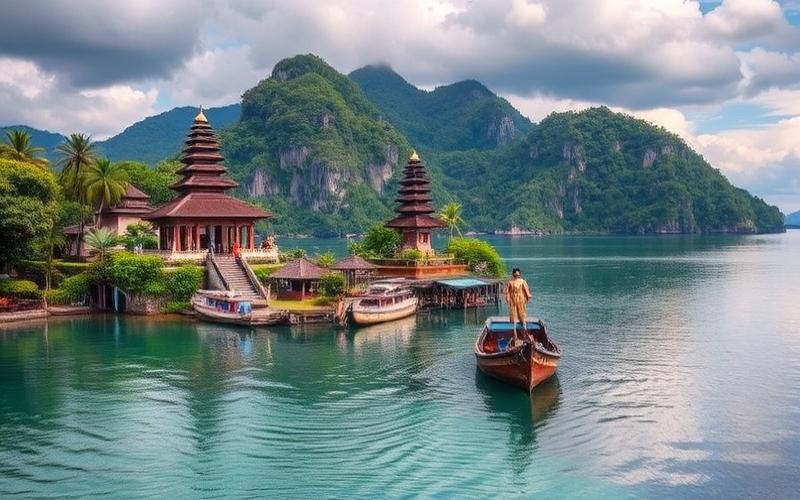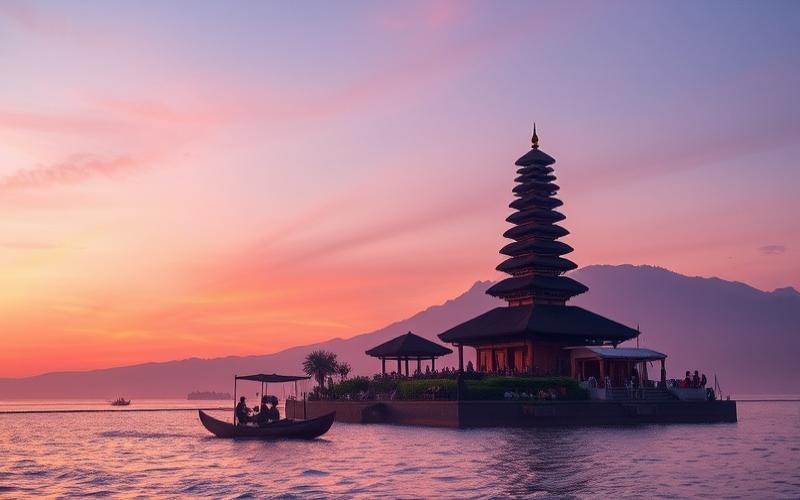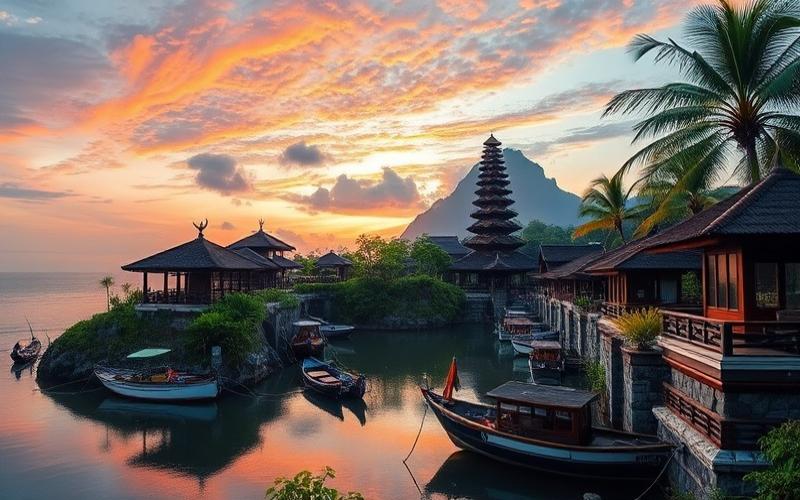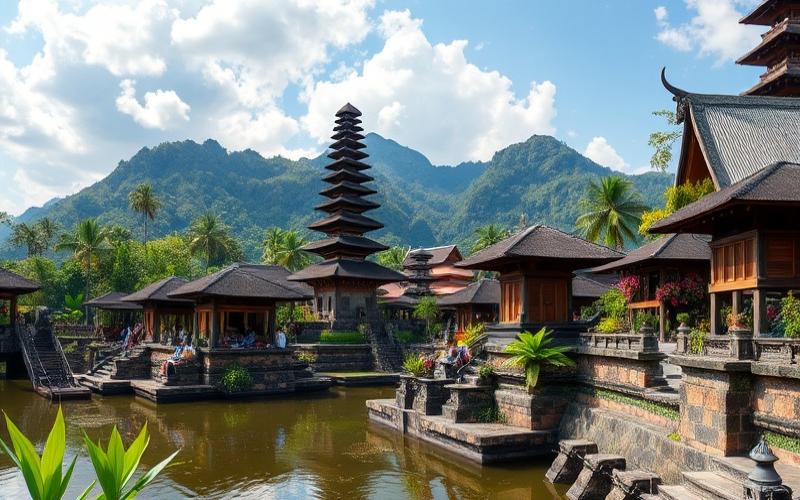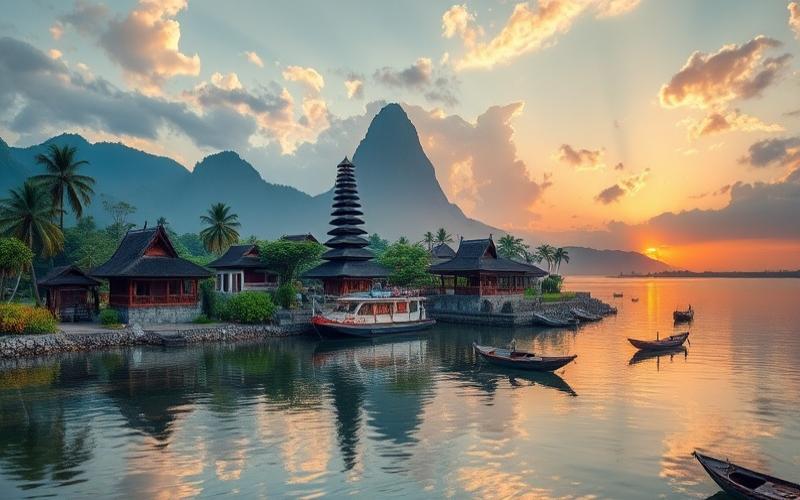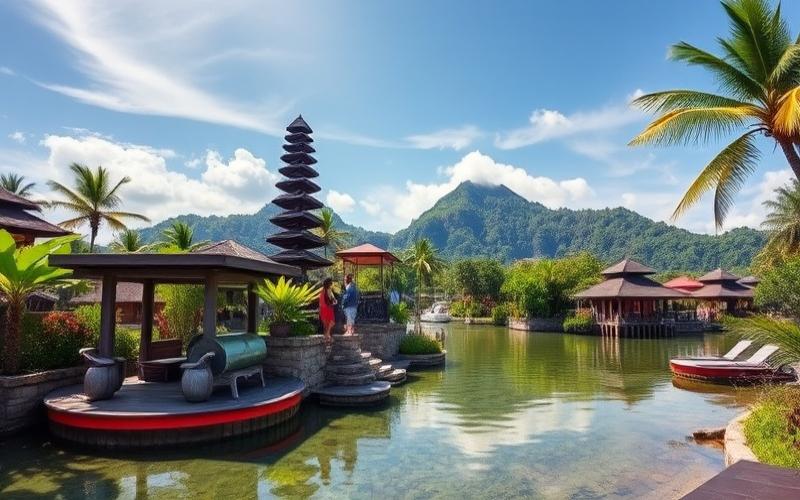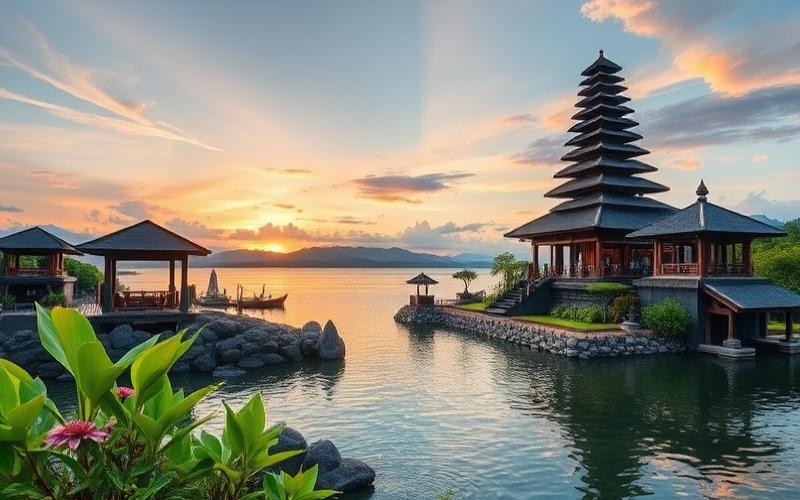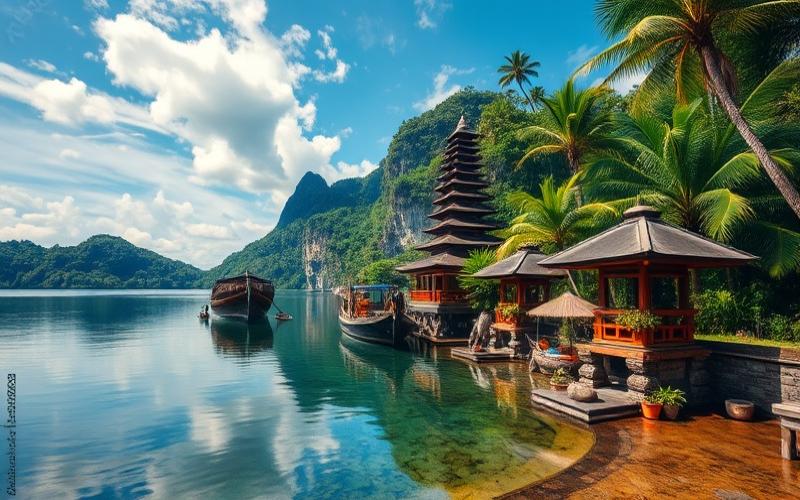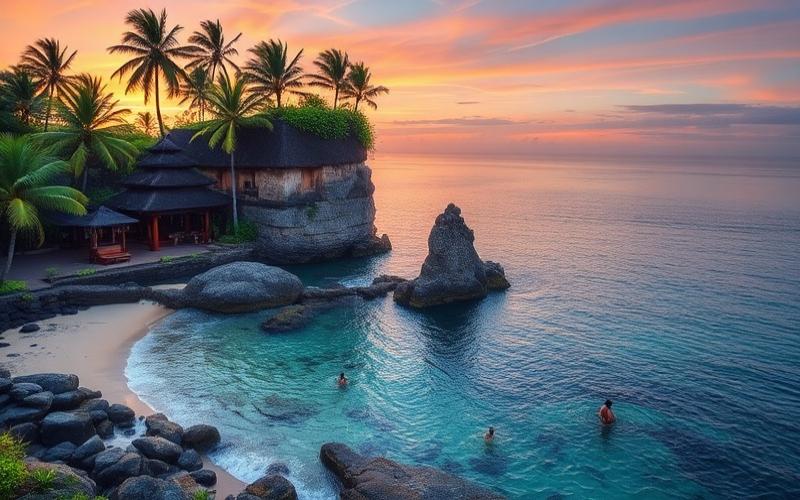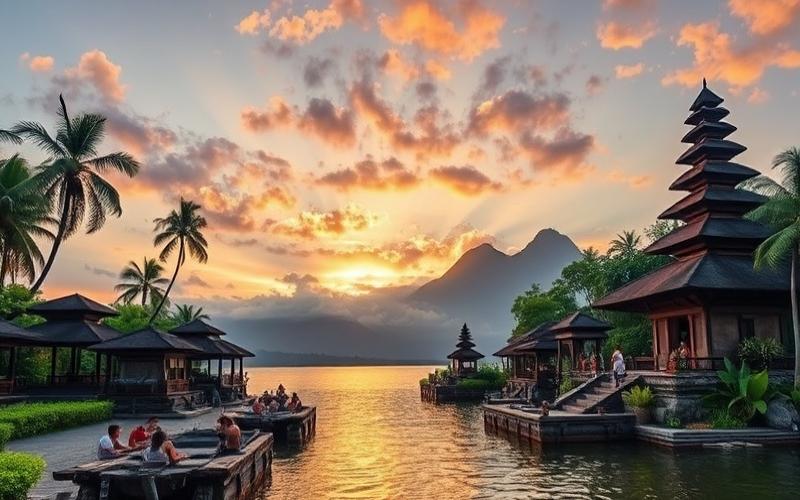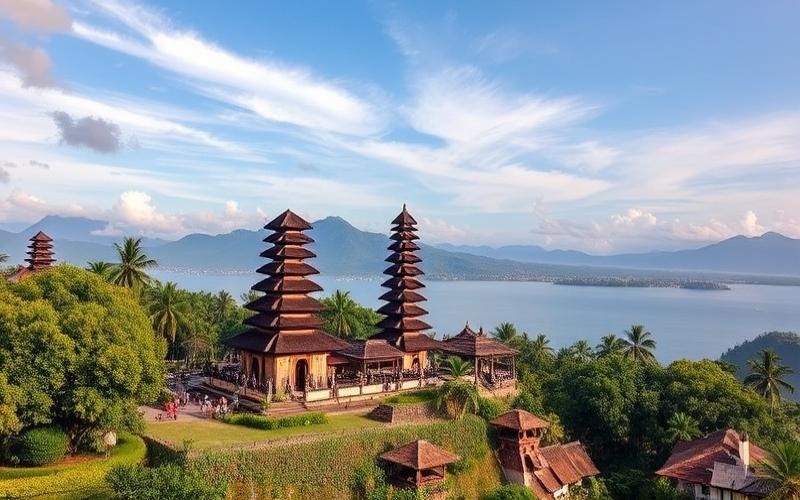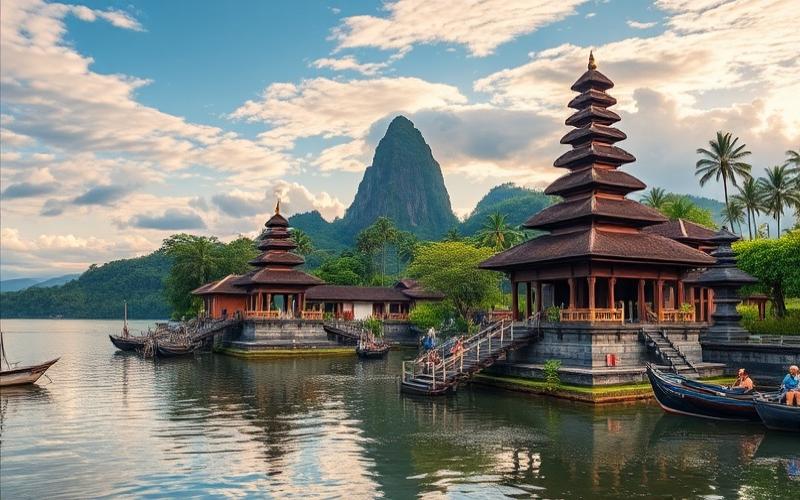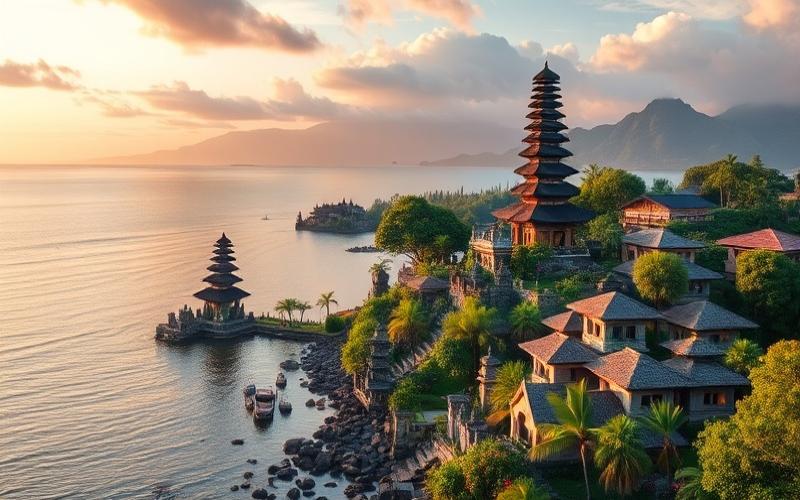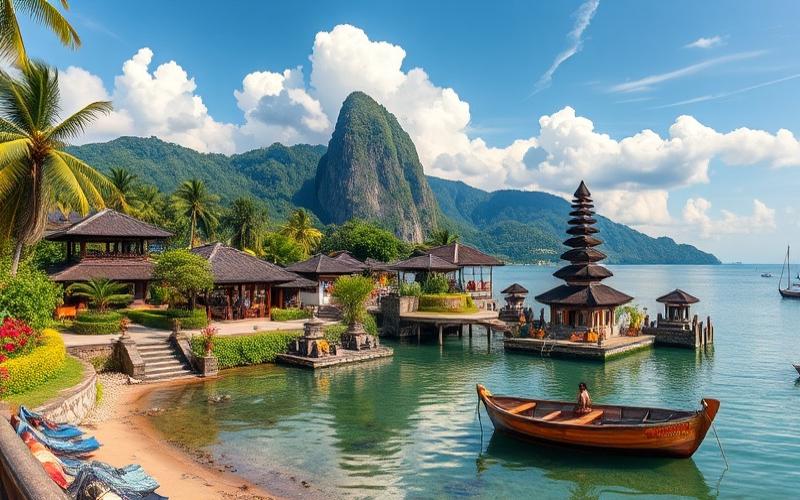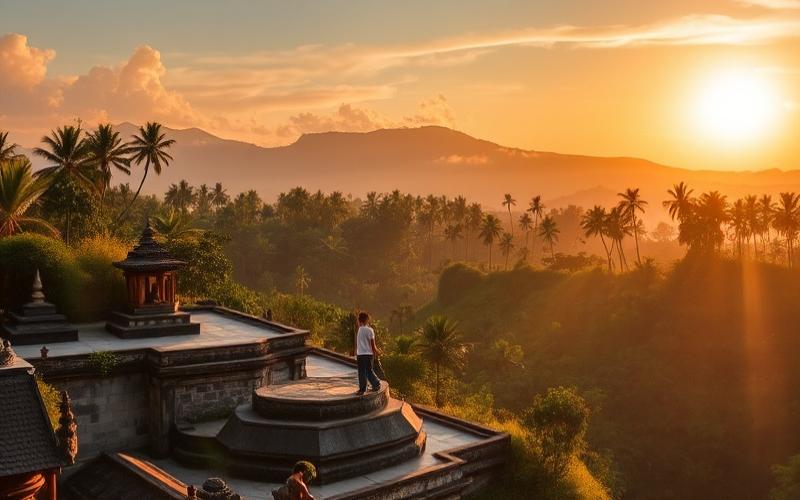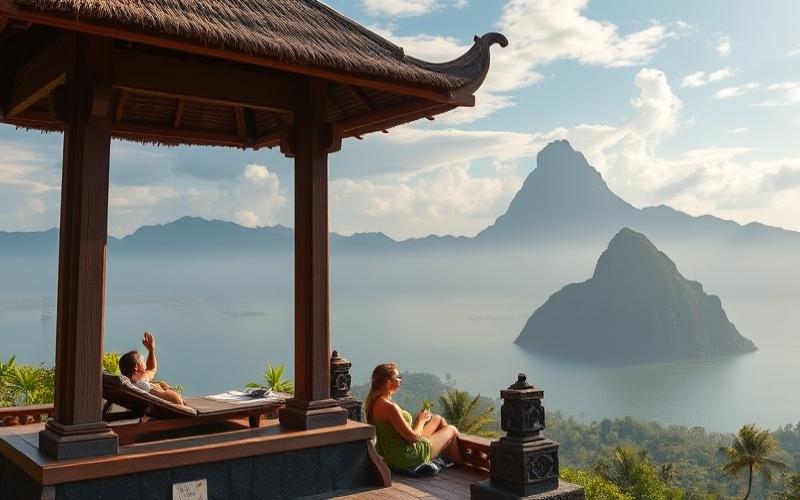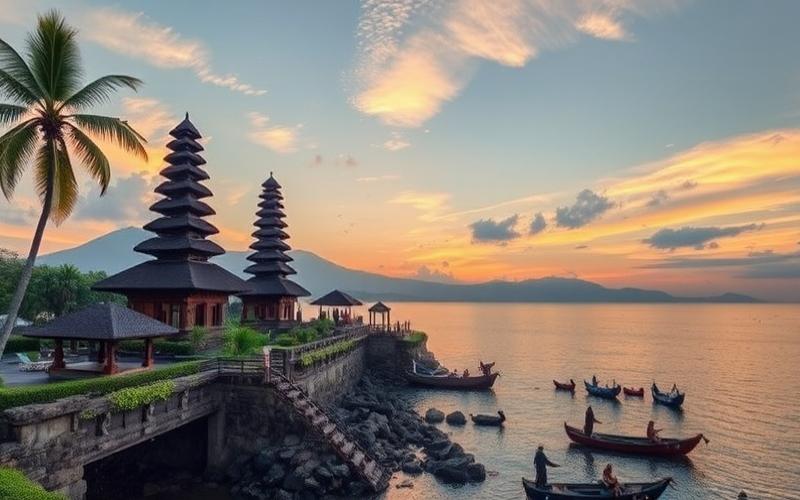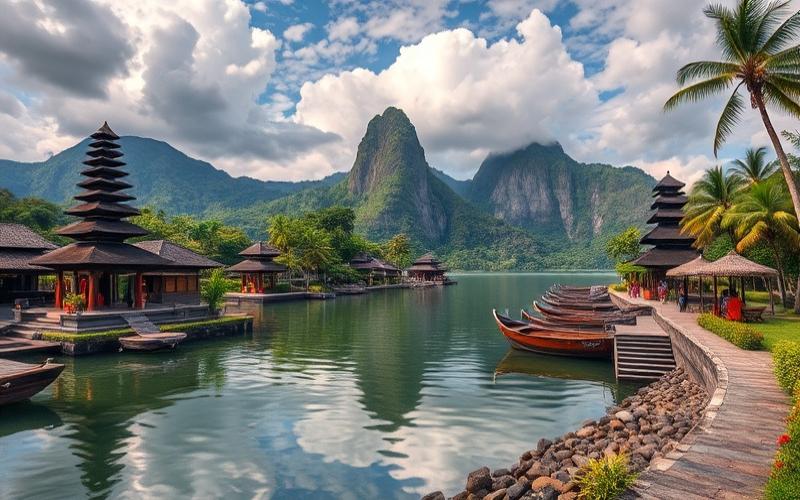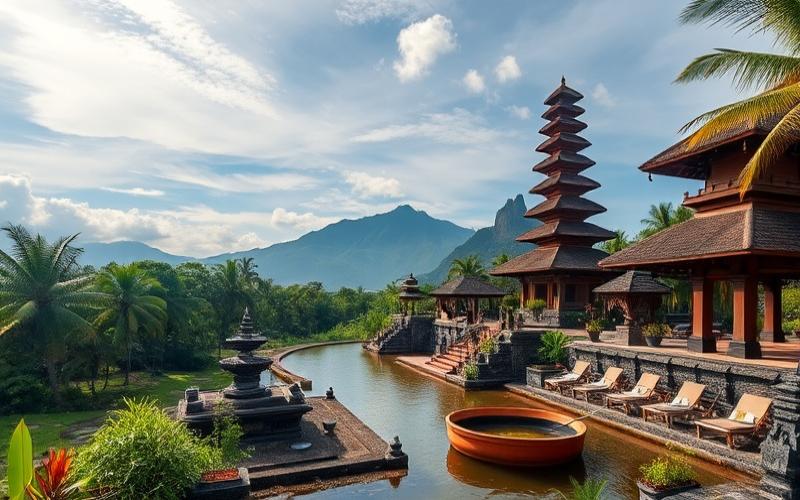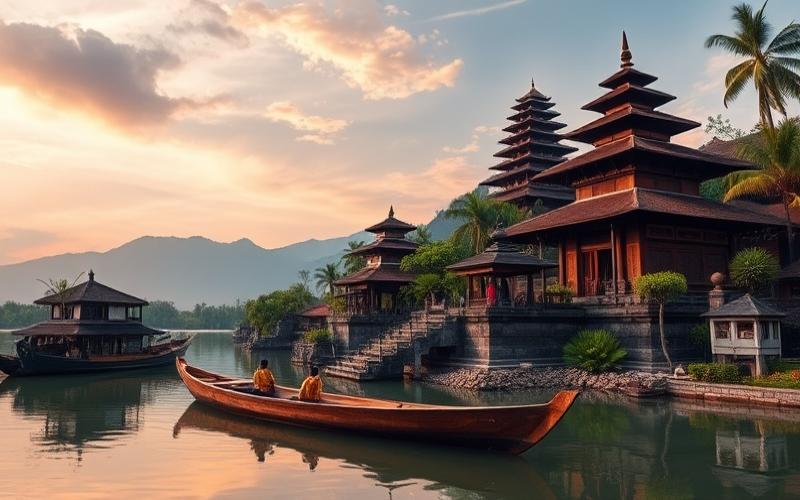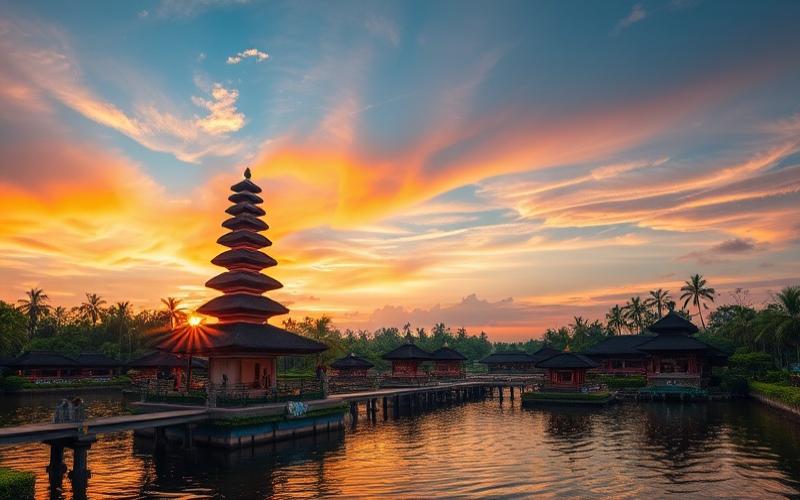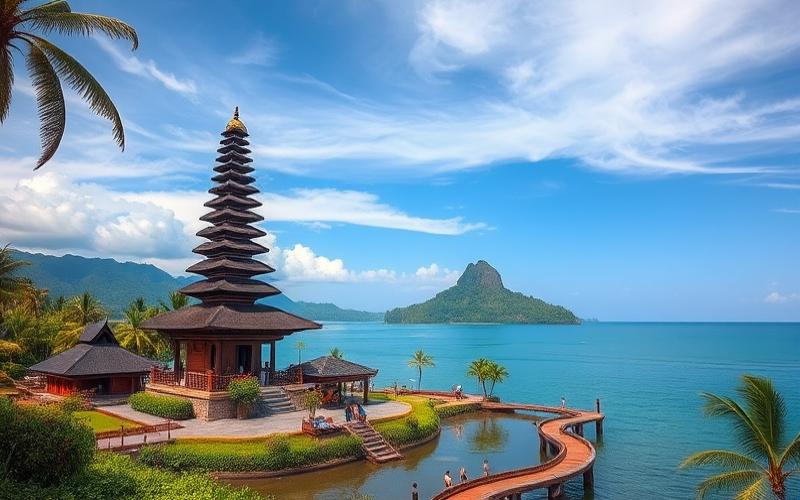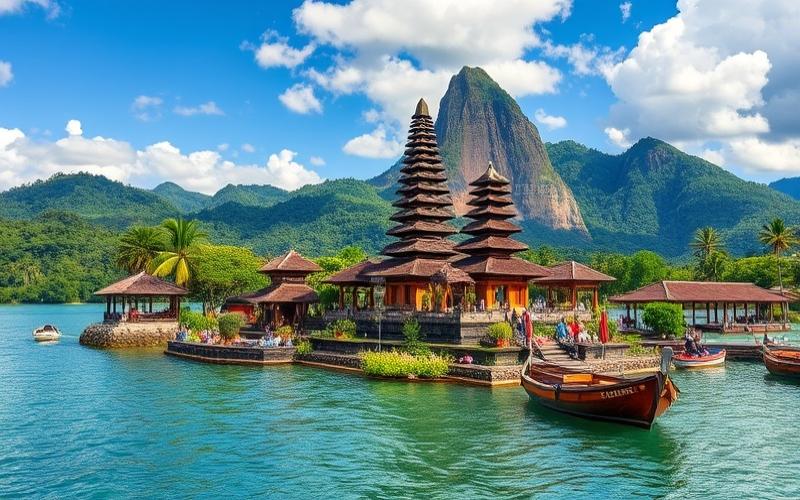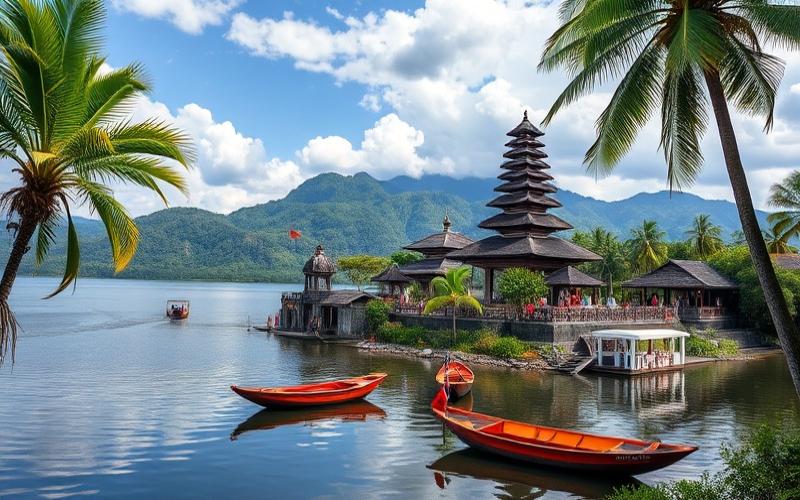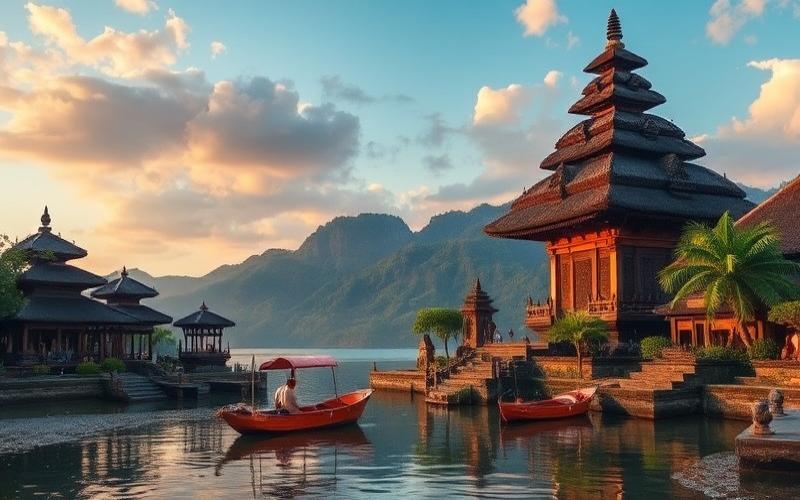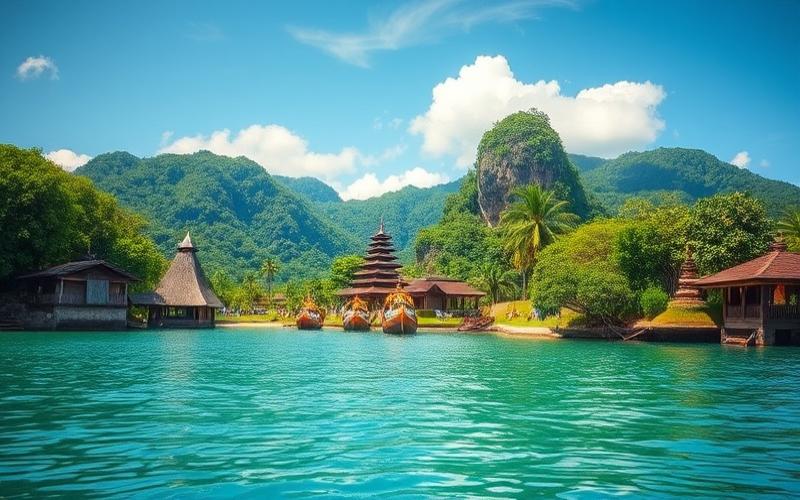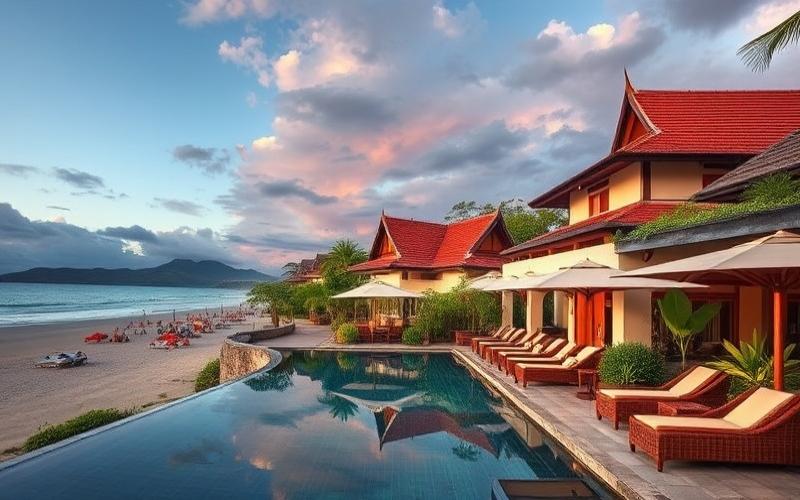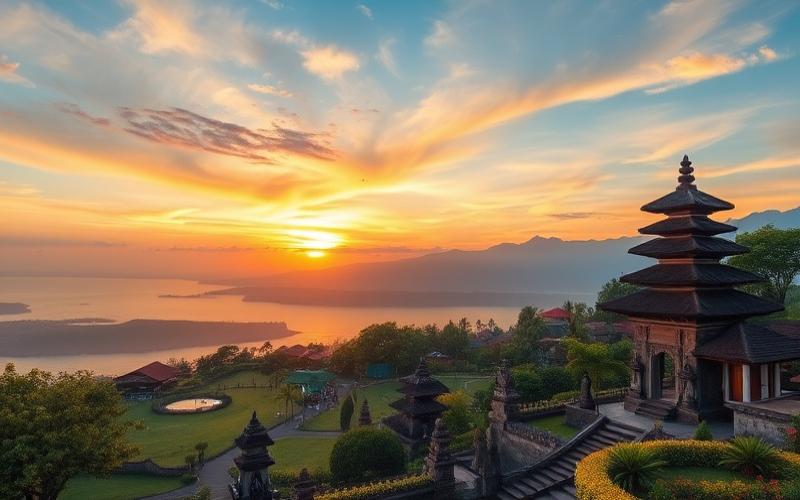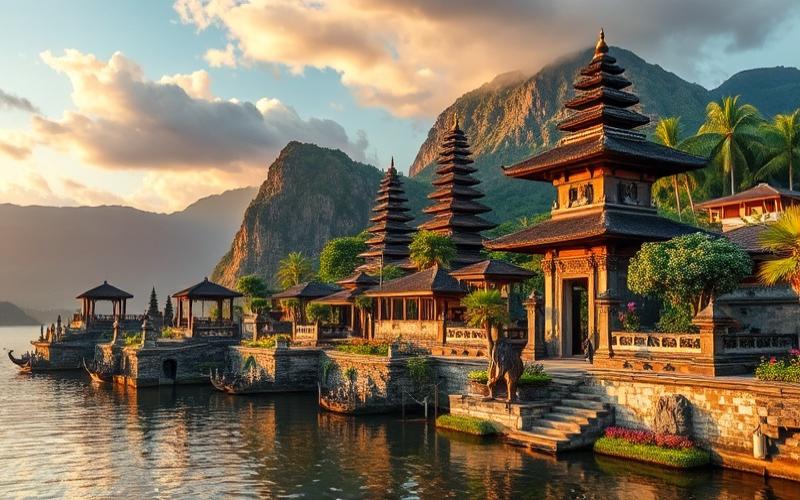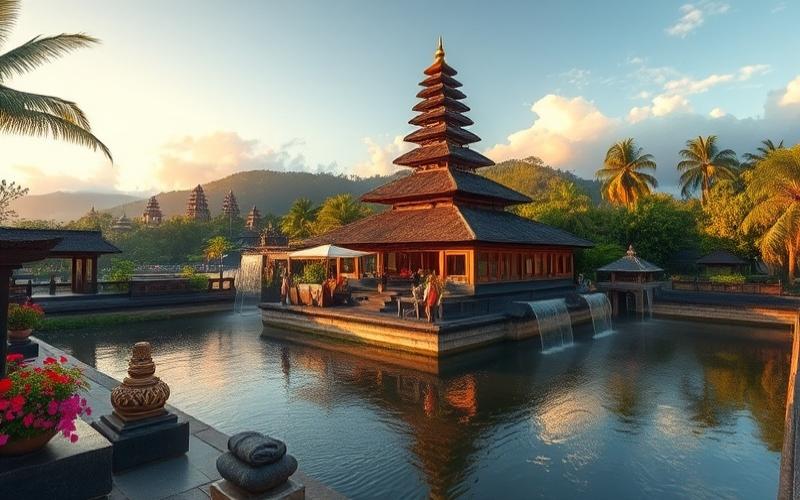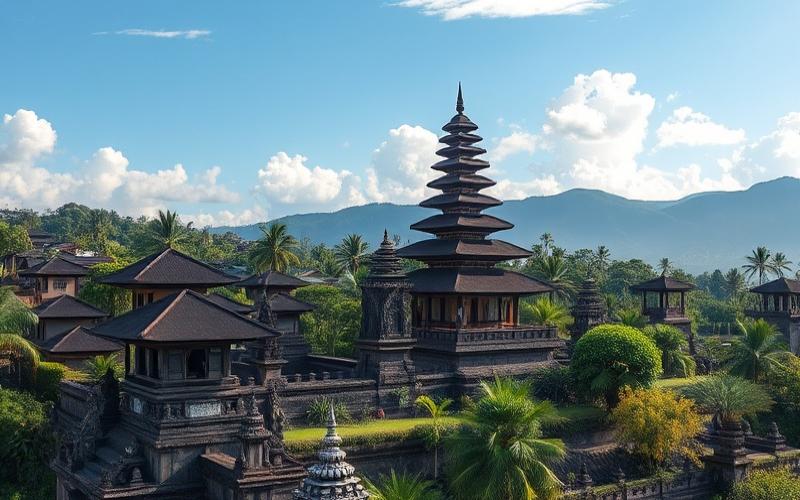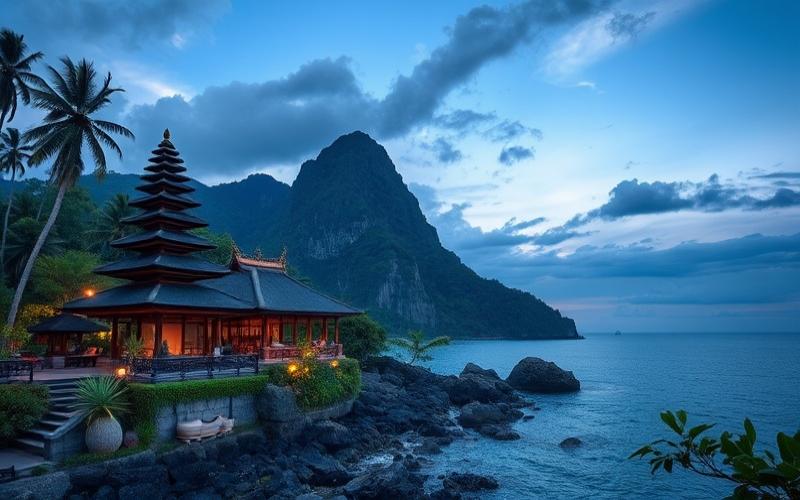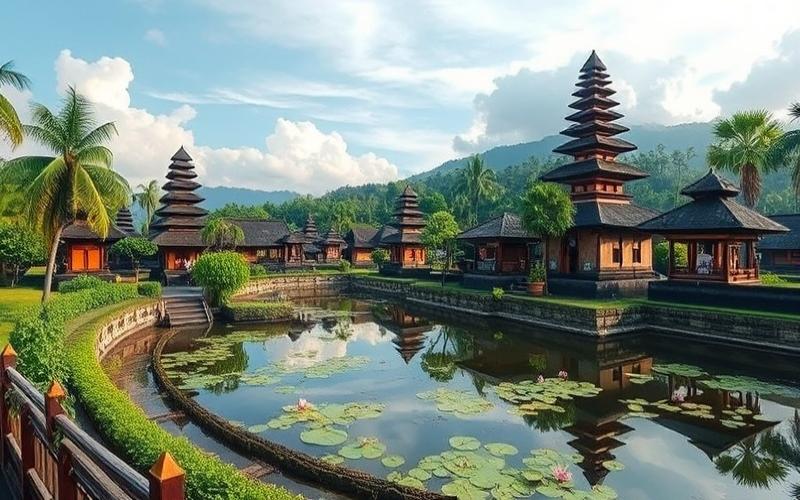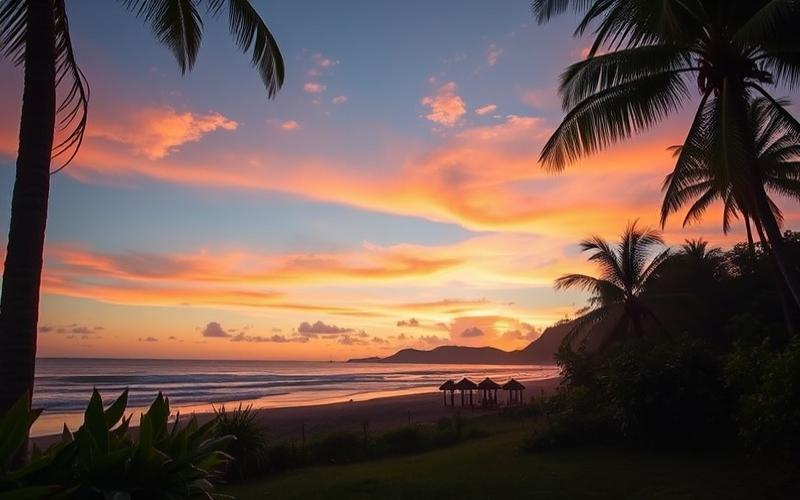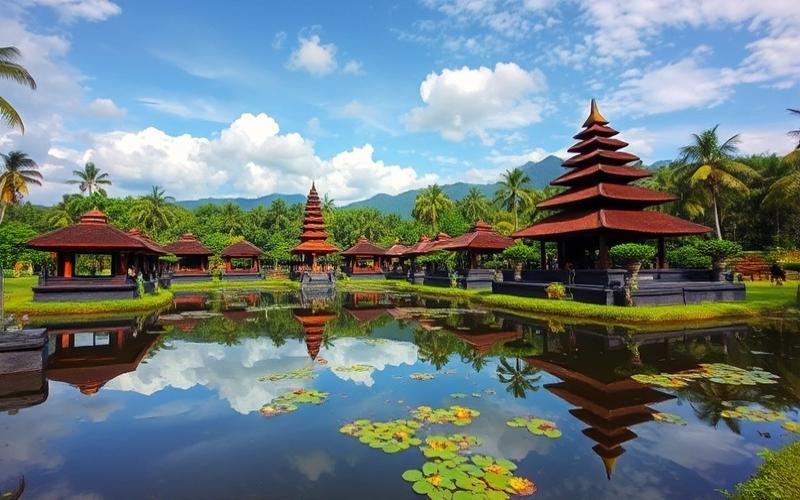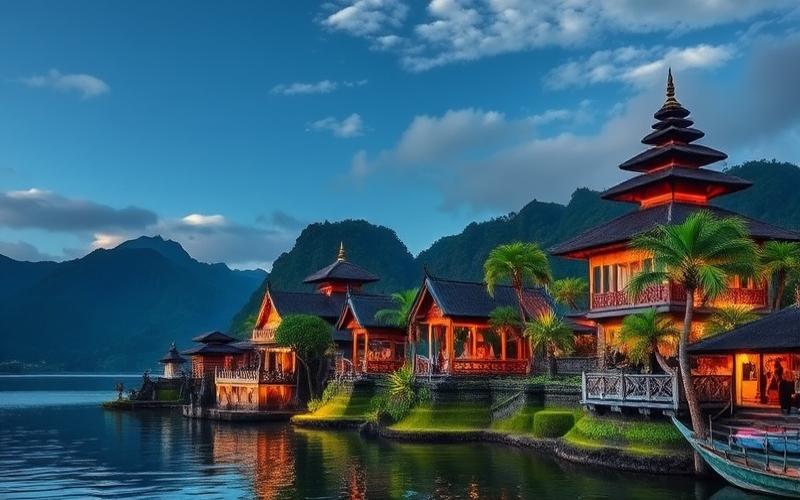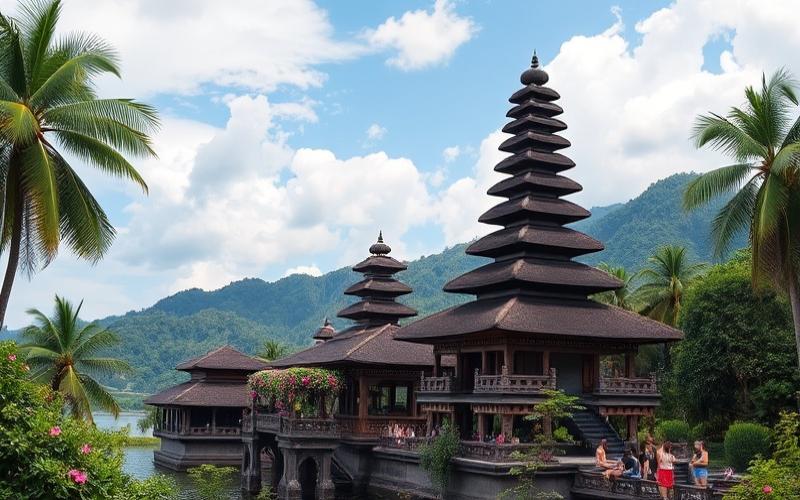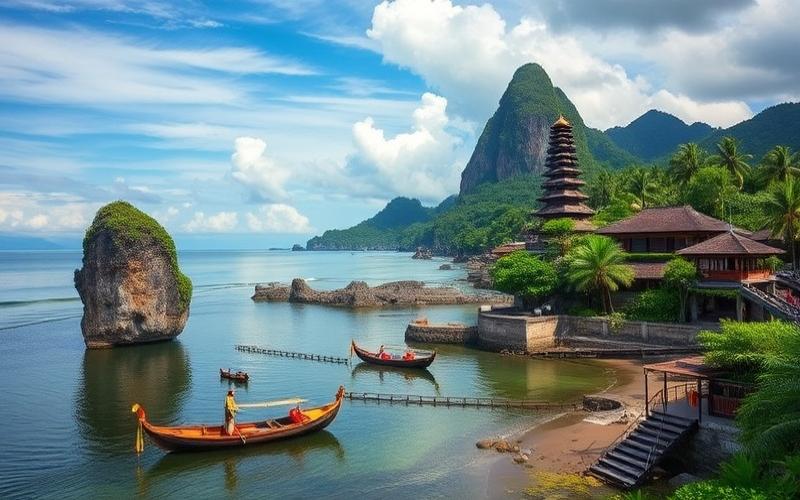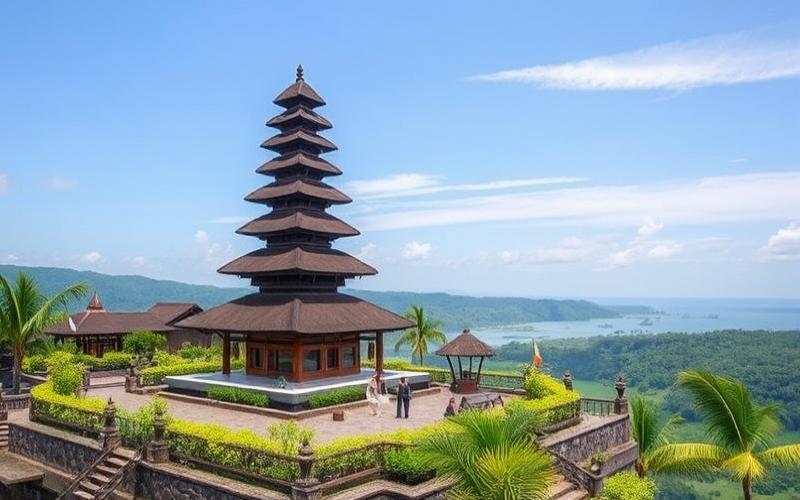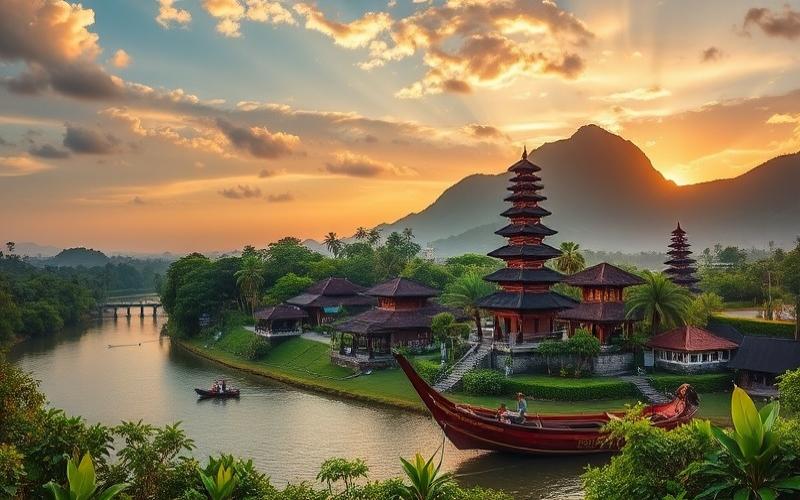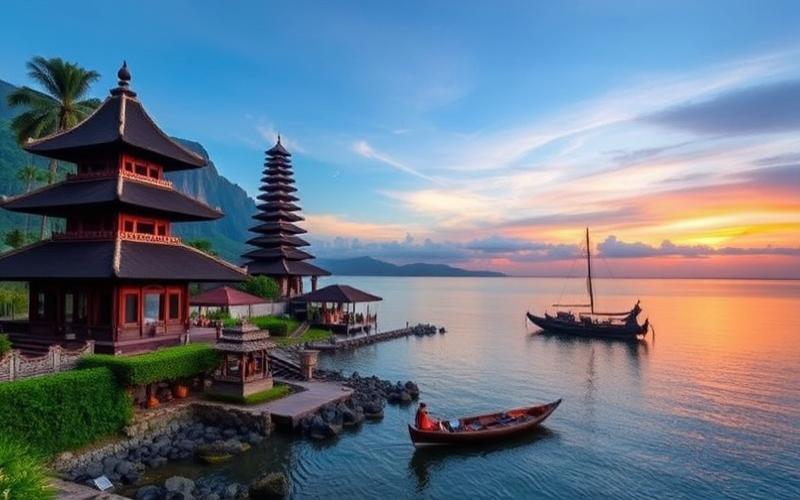
 Published on and written by Cyril Jarnias
Published on and written by Cyril Jarnias
Green Real Estate in Bali: Towards a Sustainable Future with 2025 Standards and Subsidies
Green real estate in Bali, already booming, is set to reach a crucial new milestone in the race toward a sustainable future with the introduction of 2025 standards and subsidies.
As this Indonesian island, famous for its stunning landscapes and rich cultural heritage, seeks to balance economic development with environmental preservation, recent initiatives aim to encourage construction that respects the local ecosystem.
By committing to eco-friendly architectural standards, real estate developers hope to attract investors concerned with reducing their carbon footprint.
Simultaneously, new government subsidies offer significant financial incentives to boost the adoption of green technologies, making the dream of sustainable living not only possible but also desirable for everyone.
Good to Know:
The 2025 standards include strict requirements for renewable energy, waste management, and the use of local and sustainable materials.
Eco-Construction in Bali, Indonesia: An Overview of Standards
In Bali, eco-construction standards are governed by a set of government regulations and environmental standards aimed at ensuring safety, sustainability, and the preservation of natural and cultural heritage. Balinese authorities, in collaboration with the Indonesian government, oversee these regulations to ensure that each project respects local architectural identity while addressing contemporary ecological challenges.
Regulations and Environmental Standards
- Codes impose strict requirements for safety (including earthquake resistance), aesthetic integration with the local environment, adherence to height restrictions, and inclusion of traditional elements.
- An environmental assessment is required for projects likely to impact the neighborhood or surrounding ecosystem. This process aims to minimize ecological disruption during the construction phase.
- Buildings must comply with Indonesian National Standards (SNI) regarding structure, electrical/plumbing installations, and fire safety measures.
- The permit acquisition process often involves collaboration with local architects familiar with these specific regulations.
Examples of Sustainable Materials Used
| Material | Eco-Friendly Properties | Typical Use |
|---|---|---|
| Bamboo | Rapidly renewable, low carbon footprint | Load-bearing structures, roofs |
| Recycled Wood | Promotes reuse | Flooring, frameworks |
| Compressed Earth | Low embodied energy | Load-bearing walls |
| Local Stone | Reduces transportation | Foundations/decorative walls |
Builders also favor the use of recycled or treated glass to enhance natural insulation and reduce reliance on artificial air conditioning.
Innovative Techniques Adopted
- Modular construction combining bamboo/wood
- Green roofs promoting thermal insulation
- Passive systems for natural cross-ventilation
- Rainwater harvesting/reinjection
Positive Ecological Impacts
These practices enable:
- Significant reduction of on-site waste through reuse/recycling.
- Drastic limitation of transport-related emissions by prioritizing local materials.
- Improved thermal comfort without excessive energy consumption.
- Active preservation of Bali’s iconic landscape.
Influential Initiatives & Partnerships
Local NGOs closely collaborate with certain developers to certify projects according to their own criteria (e.g., Green School Bali using exclusively bamboo & local techniques). International cooperations also exist through programs promoting technology transfer or green financing within sustainable tourism. These initiatives actively contribute to the gradual but continuous strengthening of required standards on-site.
Challenges Faced by Builders
- Fluctuating availability or occasional shortages of certain eco-friendly materials like industrially treated bamboo
- Initial costs sometimes higher than those associated with conventional methods
- Occasional lack of local technical expertise on certain imported innovations
- Constant need for ongoing training to keep up with rapid regulatory and technological evolution
Balinese eco-construction today embodies a dynamic synthesis between strong cultural tradition and responsible innovation aimed at harmonious development with its natural environment.
Good to Know:
In Bali, eco-construction standards dictate a sustainable approach, emphasizing the use of materials like bamboo and recycled wood. Current regulations require developers to integrate innovative methods, such as natural cross-ventilation and green roofs, to minimize carbon footprint. These constructions not only enhance energy efficiency but also promote local biodiversity. Collaborations, such as those with international NGOs, have helped strengthen these standards, although implementation sometimes faces financial and logistical challenges. Eco-constructions thus contribute to ecological preservation while meeting rigorous government sustainability requirements.
Renewable Energy Subsidies in Bali: Opportunities and Challenges
Renewable energy subsidies in Bali play a crucial role in the energy transition and the promotion of green real estate development. The measures in place, driven by both the Indonesian government and international actors, offer notable opportunities but also face several challenges.
Types of Subsidies and Available Initiatives
- Direct subsidies for installing rooftop solar photovoltaic panels, notably through the acceleration program launched in 2025 by the Governor of Bali. This program primarily targets public buildings, hotels, villas, and commercial infrastructure.
- Preferential rate loans and blended finance mechanisms, supported among others by the World Bank through the Sustainable Least-Cost Electrification-2 (ISLE-2) initiative, facilitating credit access for projects integrating renewable solutions.
- Financial aid granted under international agreements such as those led by the Green Climate Fund or the UK Energy Sector Management Assistance Program (ESMAP).
- Recent regulatory reforms with MEMR 5/2025 that simplify access to clean technologies by reducing certain local requirements and promote their integration into real estate projects.
Concrete Examples of Support
| Project/Initiative | Type of Assistance | Impact on Real Estate |
| Bali Rooftop Solar Program | Provincial subsidy & regulatory obligation | Massive acceleration of solar on hotels/villas |
| ISLE-2 funded by World Bank & partners | Concessional loan + international subsidy | Incentive for green connection & reduced energy costs for new residential areas |
| Regional Green Energy Network – Asia Call | Technical expertise & best practice sharing | Support for local developers to integrate environmental standards |
Influence on Green Real Estate Development
These mechanisms enable:
- Significant reduction of initial costs associated with integrating renewable energies during the construction or renovation of residential/commercial buildings.
- Ensuring early compliance with future environmental standards planned for 2025 regarding energy efficiency and carbon emission limitations.
- Enhancing the commercial appeal of “green” properties, especially among an international clientele concerned with sustainability.
Challenges Faced by the Real Estate Sector
Summary list:
- Difficult access to financing: Despite the availability of loans/subsidies, many developers struggle to meet the required technical or administrative conditions.
- Uneven social acceptance: Some owners/investors remain hesitant about perceived return on investment or fear increased complexity in daily management (BESS maintenance, etc.).
- Technological obstacles: The local supply chain is not always capable of ensuring rapid supply of certified equipment; there is also sometimes a lack of qualified technical expertise.
Inspiring Cases
Several Balinese hotel complexes that benefited from the provincial program have successfully transitioned quickly to a “net zero energy” model, reducing their energy bills while enhancing their eco-tourism offerings. These successes now serve as local references for new real estate investors seeking to combine economic performance with strict adherence to the new environmental regulations expected by 2025.
The synergies between public/local incentives and international support thus form a solid foundation but will need to be strengthened so that these pilot models become truly widespread.
Good to Know:
In Bali, several subsidies are available to promote renewable energy in the real estate sector, supported by government and international initiatives. These opportunities include tax incentives and preferential financing to integrate solutions like solar panels and water recovery systems. However, challenges remain, particularly regarding initial financing, where high costs can deter real estate actors, as well as limited social acceptance and technological limitations, such as the lack of local technical expertise. Concrete examples include projects like “Green Lotus Villas,” which were partially subsidized to install solar roofs, serving as inspiring models for other developers while complying with 2025 environmental standards. Furthermore, collaboration with organizations such as the French Development Agency has strengthened energy transition initiatives in the real estate sector, highlighting the importance of international partnerships.
BREEAM Certification in Bali: A New Standard for Green Real Estate
BREEAM certification is gaining increasing importance in Bali, where it is now shaping construction practices and establishing itself as a benchmark standard for real estate players seeking to meet international sustainability requirements. This dynamic helps position Bali as a pioneer in green real estate development in Indonesia by 2025.
Key BREEAM Certification Criteria Include:
- Energy Efficiency: reducing consumption and optimizing systems to limit carbon footprint.
- Use of Sustainable Materials: preferred choice for materials with low environmental impact, recycled, or from responsible sources.
- Effective Water Management: water-saving devices, rainwater harvesting, and strategies aimed at preserving water resources.
- Ecological Enhancement and Biodiversity: integration of green spaces, preservation or restoration of local ecosystems.
| Criterion | Main Objective | Application Examples |
|---|---|---|
| Energy Efficiency | Reduce consumption & emissions | High-performance insulation, renewable energies |
| Sustainable Materials | Limit impact on resources & pollution | FSC-certified wood, low-carbon concrete |
| Water Management | Optimize usage & protect resource | Dual-flush systems, green roofs |
| Biodiversity | Preserve/increase ecological value | Integrated natural gardens |
Adoption of the BREEAM framework aligns with Indonesian government policies that have encouraged sustainable development in construction for several years. The Balinese government has set as a priority objective the significant reduction of building-related emissions and actively supports any approach contributing to this national commitment. Thus, obtaining an international certification such as BREEAM is valued within the local regulatory framework.
The Challenges Related to This Implementation Are Multiple:
- Technical adaptation to international standards sometimes distant from local traditional practices
- Limited access to certified materials or advanced technologies
- Higher initial costs related to the external evaluation process and necessary investments
To support this transition toward greener real estate:
Local developers adapt their methods by collaborating with accredited BREEAM assessors from the design phase to anticipate technical requirements; they also invest in internal training on essential environmental topics.
Public incentives exist in the form of:
- Partial subsidies covering certain environmental assessment fees
- Temporary tax relief for certified green real estate projects
- Administrative acceleration during permit processing if the project aims for recognized labeling
This combination of local political commitment, gradual sector adaptation, and financial support clearly guides Bali toward its stated ambition: becoming an essential regional model in sustainable real estate by 2025.
Good to Know:
BREEAM certification is gaining importance in Bali, significantly influencing construction practices toward a sustainable future. It imposes rigorous criteria, such as energy efficiency, use of sustainable materials, and effective water management, perfectly aligning with Indonesian government initiatives to promote green real estate, in line with 2025 objectives. Local developers face the challenge of integrating these standards while adapting to growing expectations for sustainable practices. To encourage this transition, the government offers subsidies and incentives, making BREEAM certification a key factor of competitiveness for new real estate projects in Bali.
Disclaimer: The information provided on this website is for informational purposes only and does not constitute financial, legal, or professional advice. We encourage you to consult qualified experts before making any investment, real estate, or expatriation decisions. Although we strive to maintain up-to-date and accurate information, we do not guarantee the completeness, accuracy, or timeliness of the proposed content. As investment and expatriation involve risks, we disclaim any liability for potential losses or damages arising from the use of this site. Your use of this site confirms your acceptance of these terms and your understanding of the associated risks.

